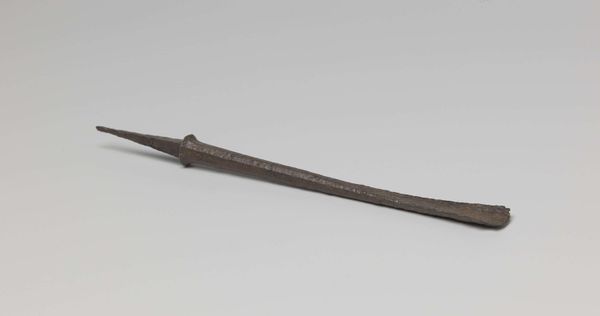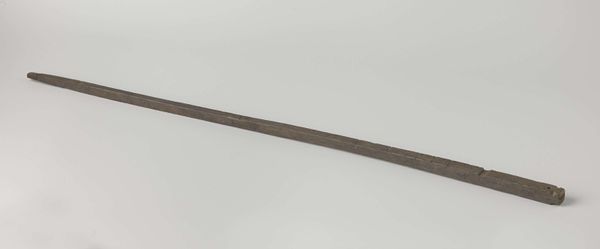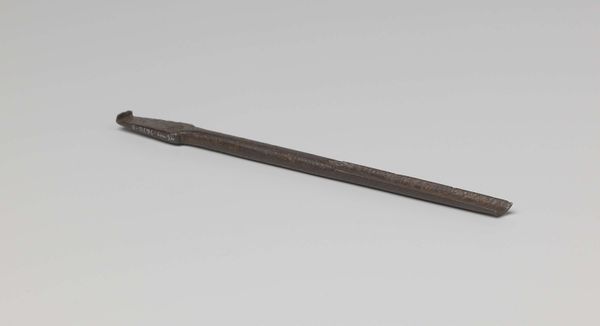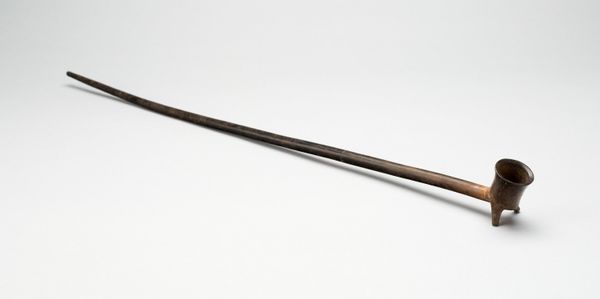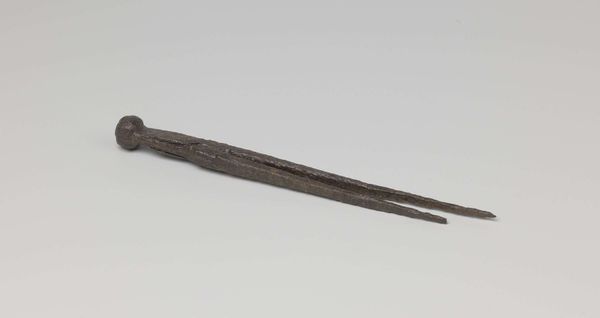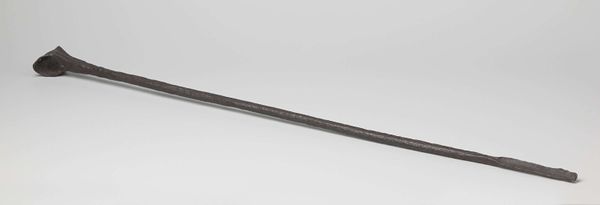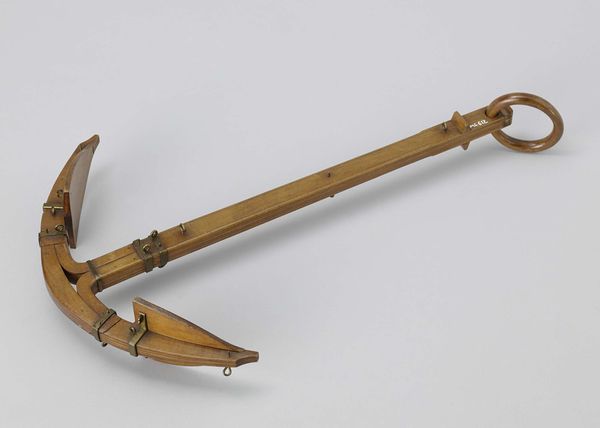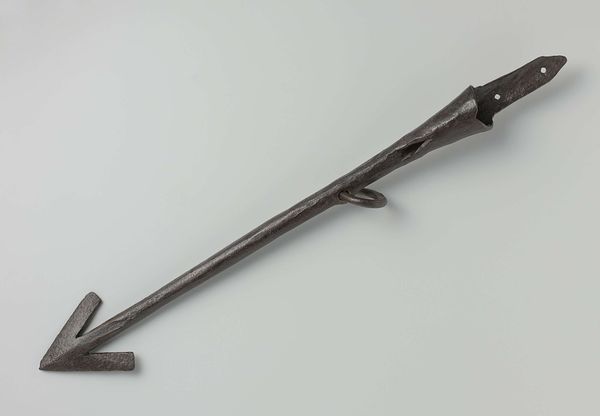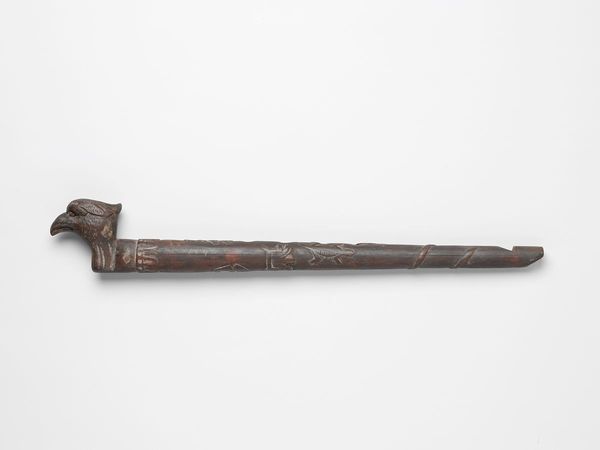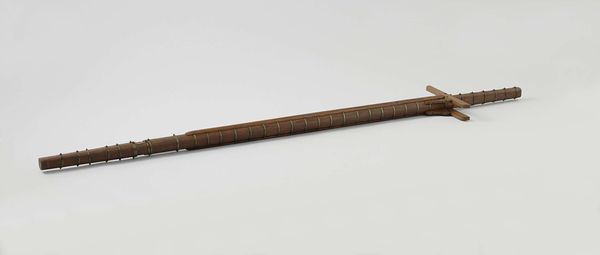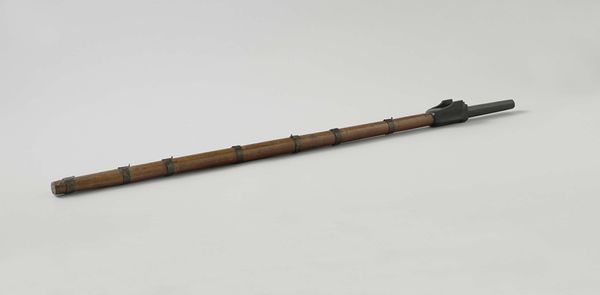
sculpture, wood, architecture
#
sculpture
#
wood
#
architecture
Dimensions: height 145.5 cm, length 27.9 cm, width 19 cm
Copyright: Rijks Museum: Open Domain
Curator: Editor: Here we have an object identified as a "Model of a Made Mast," dating back to around 1821. It’s made of wood, attributed to an anonymous artist. The detail is remarkable! What catches your eye about this piece? Curator: It's a fascinating object, isn't it? I am immediately drawn to the materiality, to the wood itself, the very substance that was painstakingly shaped by someone’s labor. A model reveals so much about the actual means of production. Do you consider the possible skill that this artwork asked of the unknown worker to construct with only wood? Editor: Absolutely. You can almost feel the hand of the maker. But, it's also a model, right? How does that affect our perception? Curator: Precisely. The modeling practice itself raises intriguing questions about representation and consumption. Think about what went into sourcing, treating, and forming this wood to resemble something so integral to a ship, thus an understanding the technologies behind seafaring. Does this contrast high art from utilitarian objects, or rather display them on equal footing? Editor: So you’re saying that the materials and construction processes become the story itself, overshadowing the simple presentation of the piece? Curator: Exactly! It prompts us to look beyond aesthetics and consider the social context, the industry, the labour involved. In what manner did its design and construction engage with then current debates in materiality studies or maritime infrastructure? This becomes our focal point, inviting critical insight. Editor: That’s such a different way of looking at it than I usually would! I always thought of the final appearance but I think I learned more thinking about where this came from than the artwork itself. Curator: That's what makes it so compelling. Material analysis can unearth social meanings beyond artistic representation, challenging traditional art historical narratives and how objects are crafted with precision as a form of functional knowledge.
Comments
No comments
Be the first to comment and join the conversation on the ultimate creative platform.
